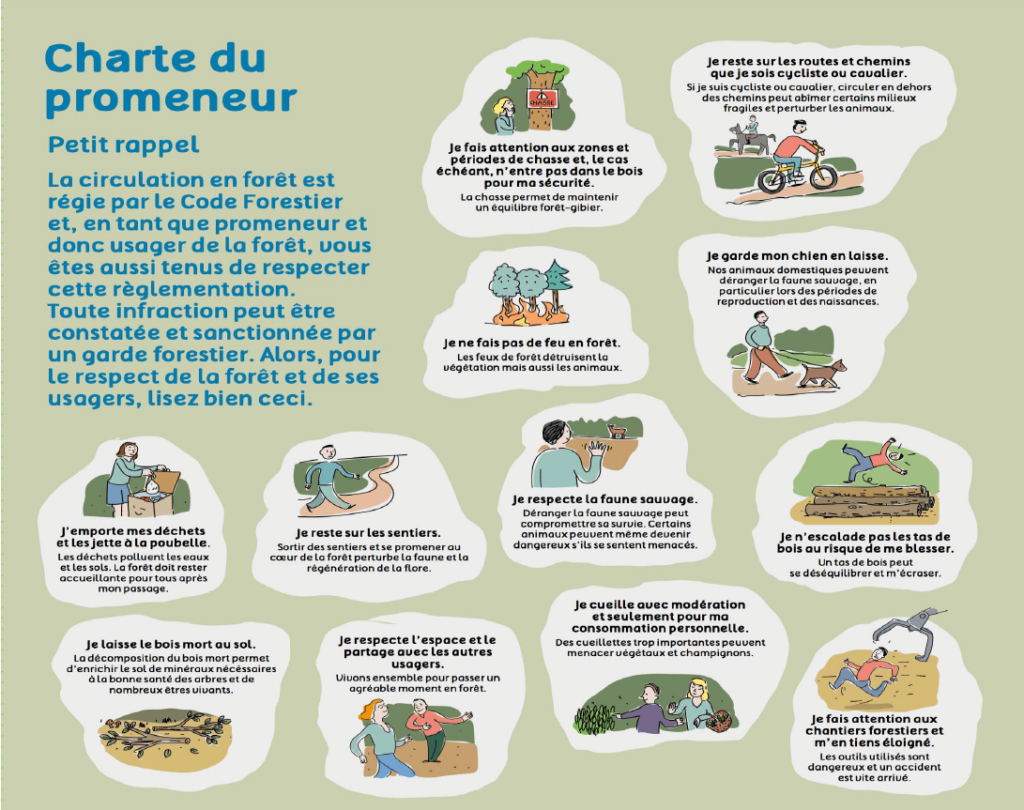Forest owners or managers
Educational panels in the forest
The public love the forest, but do they know how to behave in it? Do they have an overall vision of the forest, all the services it provides and the role of its manager? The answer to these questions is often ‘no’. Educational panels can help you raise public awareness of these issues.
RFSB offers educational panels for forest owners and managers.
Practical information
The range of panels is currently being revised
Forestry work
The thinnings
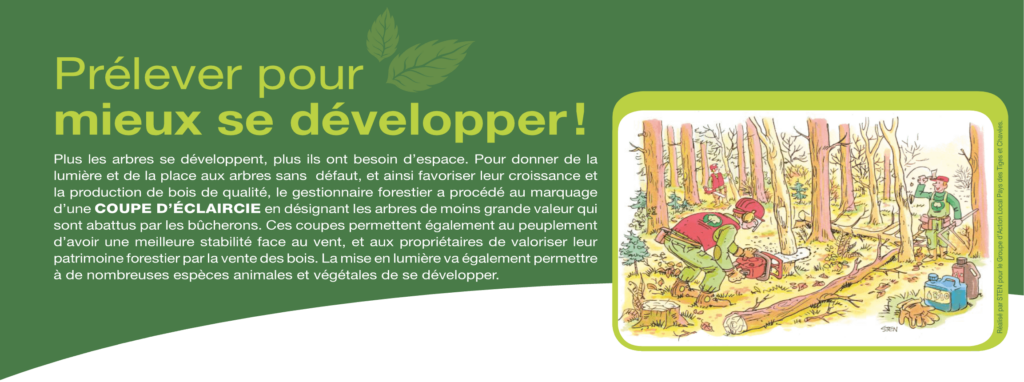
Why carry out thinning? If all the seedlings are allowed to grow, the trees will be competing fiercely for light and will grow as tall as possible. This will make them very sensitive to wind. That's why we select by eliminating trees that are weak, poorly formed, damaged, too branched or of a species we don't want to keep.
Trees that are preserved will become stronger, with more extensive roots, wider trunks and more balanced branches. They will have better access to light, water and minerals. Eventually, these trees will be harvested to make furniture, parquet flooring, frameworks or any other object out of wood, a renewable material par excellence. The best trees will be harvested last and used as seedlings to ensure high-quality natural regeneration. Some of these trees will be maintained until they die, serving as a sanctuary for biodiversity.

Reforestation or planting
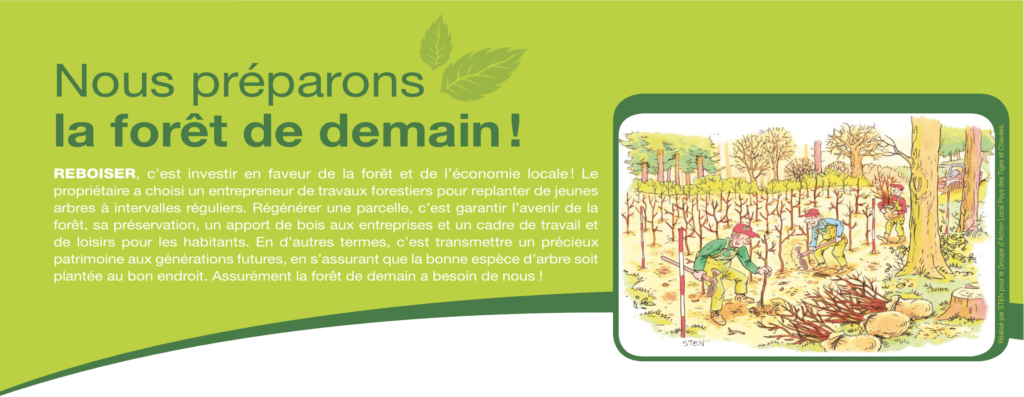
There are many advantages to planting over natural regeneration:
- the forest is coming back faster;
- species are chosen by managers, taking into account climate change;
- it's easier to manage and maintain (for the first four or five years, the forester will make several clearings to prevent the small plants from being invaded by bramble and bracken. Planting in rows means you can see where the plants are).
Natural regeneration puts its trust in nature. It is also a valid method that causes less disruption to the ecosystem and landscape. It is used in ‘close to nature’ forestry methods such as the Pro Silva method.
For foresters, it's a huge responsibility to make these choices, which will define the forest for decades to come! It's made all the more difficult by climate change, to which trees will have to adapt.

Clearcutting
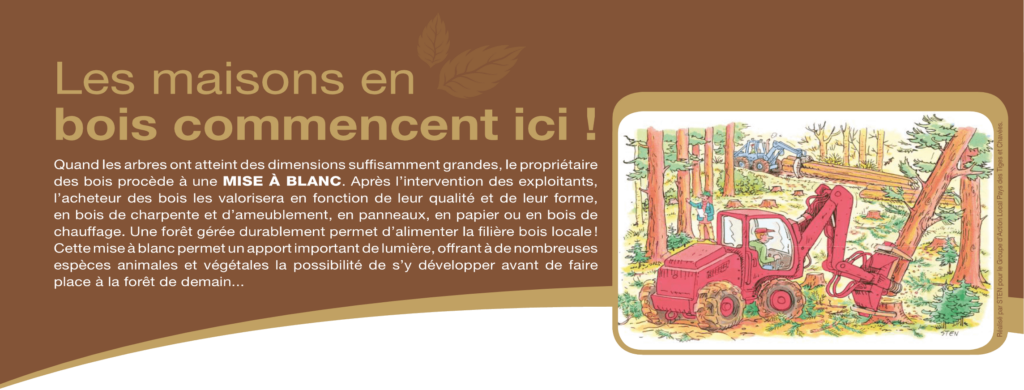
Forest managers have two reasons for clearcutting: either because the trees are mature and ready to be harvested, or because they have encountered a serious problem and need to be replaced. These problems can be caused by a storm (windfall), an insect pest (bark beetles, for example) or a disease (ash blight, for example).
Clearcutting is not deforestation because the forest manager ensures that the forest returns, either through natural regeneration or planting. There is no deforestation in Europe, unlike in tropical forests. On the contrary, Wallonia's forest area has been growing steadily since 1850.

Cutting in woodland
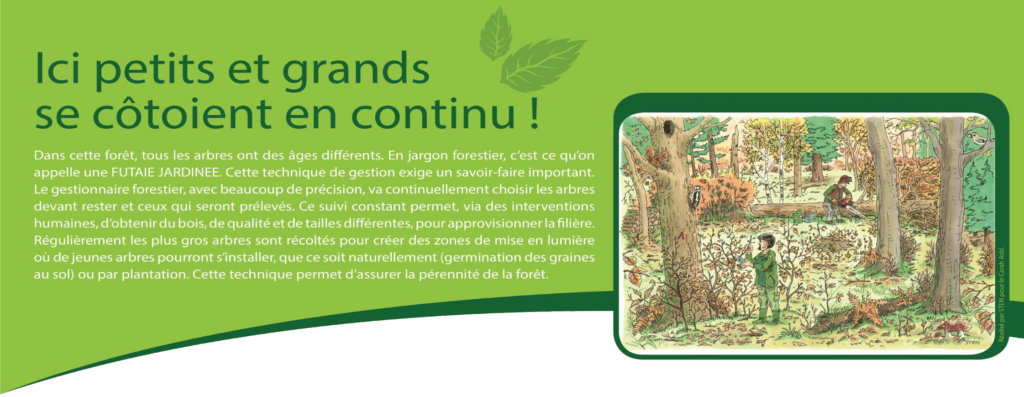
One way of ensuring forest resilience is to diversify at all levels, creating a mosaic of ecosystems within the same forest:
- species (hardwood or softwood, native or exotic, adapted to climate change);
- the origin of the plants (plants grown from seeds of various origins);
- silviculture methods (planting or natural regeneration, more or less intensive clearing, etc.);
- the ages of the trees.
A forest for the future is a forest for all generations, not just old trees!

This page is automatically translated by artificial intelligence. If you see any errors or untranslated phrases, please let us know by mail.

